#platform: Sharp X68000
Explore tagged Tumblr posts
Text
PC Engine - Prince of Persia
Title: Prince of Persia / プリンス・オブ・ペルシャ
Developer: Broderbund Software / Argent
Publisher: Riverhill Soft
Release date: 6 November 1991
Catalogue No.: RHCD1002
Genre: Platform Action
Format: Super CD-ROM2


Just like the Mega CD version I showcased earlier on, this PC Engine version of Prince of Persia is also based on Arsys' PC-9801 and Sharp X68000 computer ports, though I would say it also carries the arranged soundtrack from the FM Towns port which also came from Riverhill Soft who published this version in Japan. Prince of Persia is a good-looking platformer, but the music really steals the show with its hypnotic Middle Eastern rhythms. It's probably the only reason they could justify shipping this game on a CD. It's a shame this version does not have the voice-acted cutscenes from the Mega CD version though.
Since it is also based on the FM Towns version from the same publisher, I also attached a video of the FM Towns version. You can see that the CD soundtrack is the exact same.


youtube
youtube
6 notes
·
View notes
Text

"Sol Deace" (aka Sol Feace) for the Genesis console originally developed for the Sharp X68000 in Japan, is a classic horizontal-scrolling shoot-'em-up that showcases the evolution of the genre during the early 90s. It was later adapted for the Genesis platform, introducing gamers outside Japan to its challenging gameplay and sci-fi narrative.
Graphics and Audio
One of the standout features of "Sol-Feace" is its graphical presentation. The game utilizes the Sega Genesis hardware to deliver detailed and vibrant sprites, which were quite impressive for the time. The backgrounds are richly layered, creating a deep sense of space and movement that enhances the overall atmospheric effect of hurtling through space at high speeds. The transition from the Sharp X68000 to the Genesis resulted in some changes, with the Genesis version showcasing slightly less detail due to hardware limitations; however, it still managed to impress with its effective use of color and animation.
The audio is another strong point for "Sol-Feace." The soundtrack, composed by Motoi Sakuraba, features a range of compositions that fit well with the game’s space theme. Each track complements the intensity of the gameplay, from pulsating synths during high-action scenes to more somber tones during moments of brief respite. Sound effects are adequately punchy, providing satisfying feedback with each enemy explosion and weapon upgrade.
Gameplay Mechanics
"Sol-Feace" adheres to many standard conventions of the shoot-'em-up genre, such as power-ups that enhance the player's weapons and shields. The control scheme is straightforward, allowing players to focus on strategy and movement rather than complex inputs. One notable gameplay feature is the ability to adjust the positioning of the side pods on your spacecraft. These pods can be aligned to shoot forward, backward, or spread, adding a strategic layer to how players approach different enemy formations and obstacles.
The game’s difficulty is pitched at a challenging level, typical of the genre, which can lead to a steep learning curve for newcomers. However, this also provides a satisfying experience for those who master its nuances, making repeated playthroughs rewarding.
Innovations and Influence
While "Sol-Feace" may not have introduced groundbreaking innovations, it did refine several aspects of the shoot-'em-up formula. The adjustable weapon pods, combined with solid level design that encourages strategic thinking rather than sheer firepower, offer a deeper gameplay experience. This feature likely influenced later titles in the genre, which incorporated similar mechanics for more dynamic combat scenarios.
Cultural and Historical Context
Released during a time when the shoot-'em-up genre was highly popular, "Sol-Feace" had to compete with contemporaries like "Thunder Force" and "Gradius." Its release on the Sega CD as a launch title also positioned it as a showcase of what the new add-on could do in terms of storage capacity, allowing for higher-quality audio tracks and more detailed visuals than typical cartridge-based games.
Conclusion
Overall, "Sol-Feace" on the Sega Genesis represents both a culmination and a refinement of early 90s shooter mechanics. It offers a robust challenge, detailed graphics, and an engaging soundtrack that should please any fan of the genre. While it might not have broken new ground in terms of gameplay innovation, it polished existing concepts to a high shine. For those looking to experience a piece of gaming history or just enjoy a well-crafted shoot-'em-up, "Sol-Feace" is a worthy addition to any gamer’s library.
9 notes
·
View notes
Video
youtube
Castlevania Chronicles (Original Mode) Part 1: Another Castlevania 1 Remake
So!
I originally didn’t wanna do this mainly because I had never completed this game until...well earlier today! For reasons that some may already suspect
But you know what? I’ve already covered one Castlevania 1 remake, might as well also do the other, lesser known one!
What we’re looking at here is a game originally released in 1993 for the Sharp X68000, a home computer released exclusively in Japan, which was then later ported internationally on the PS1 with the name Castlevania Chronicles, which featured both the original version of the game and an “arrange” mode which made a couple of alterations such as new designs by Ayami Kojima, remixed music, a couple new graphical effects.......rebalanced difficulty...
So when compared with Super Castlevania IV this is in some ways a much more faithful remake! Many elements from the NES original are kept here, some levels are kept but modified with extra stuff, others are partially original and partially taken from the OG while others are wholly new. The bosses themselves are, again , mostly from the original but have been given makeovers and new ones have been added
Weirdly enough though musically only 2 tracks are kept from the original: Vampire Killer and Spring Yard Zone Wicked Child . All the rest is either new stuff or remixes of past tunes
The first stage is pretty much a 1:1 recreation of stage 1 from the original but already you can begin to spot all the enhancement: this game just looks great across the board with some great spritework and a bunch of neat details: here you can spot some peeping eyes flying outside the windows looking at you and every once in a while the windows will open letting a bat fly in
At a certain point there’s a breakable wall that, in the original, held your first piece of meat.
Here on the other hand it spuns an infinite amount of Flea Men
Ha! Good one developers! Aww man that was some nice foreshadowing trolling!
The second stage starts mixing things up: it’s essentially a recreation of the first half of stage 4 from the original, though the structure is completely redone and has an absolutely bitchin’ tune
The last part when you’re on that tiny platform as the water rises quickly, with the mermen attacking you and the platform getting destroyed bit by bit is to be considered a gatekeeping moment: it’s the first point in the game where you’ll inevitably die.
A lot
If you can’t make it past this point go play something else��‘cause the game is....
well...
you’ll see
The third stage starts as a semi recreation of the second half of the original stage 4 but quickly turns into its own thing. Those things that come out of the trees I believe originate from Haunted Castle, an Arcade reimagining of Castlevania 1.
There are also Mudwomen! With visible and I think jiggling boobs! Someone must’ve been horny in the development team...
The last part is the only section in any Castlevania game to feature ice physics, which initially horrified me....but to be fair they’re not so bad and the section isn’t too long
The boss is...honestly the second easiest in the game besides the Giant Bat
Controls-wise Simon can control his jumps like in Castlevania IV and can whip straight downwards and diagonally downwards...but not upwards in any way, though his whipping speed has been significantly increased
Stairs are back to being every bit as obnoxious as before and subweapons are once again activated by pressing up and attack
So in general it’s like a mixture of the classic controls and those of Super Castlevania IV
Which means that at least this game won’t be as punishing as the NES games right?
....right?
......
.........
..........
.............
7 notes
·
View notes
Text
Sega's catalog of racing games is impressive, but for those looking for truly exceptional titles, the following entries stand out among the rest.
Racing games are one of the oldest video game genres around, thrilling gamers since Magnavox Odyssey owners gave Wipeout (not that one) a go. Nearly every developer around the world has given racing games a try, with some getting more success than others. Mario Kart has sold a lot of units for Nintendo, and Gran Turismo became the biggest-selling game on Sony’s PS1.
However, it’s hard to think of a company that likes racing games more than Sega. They ruled the arcades directly with a wide range of titles that would go on to become classics in the genre. But which ones are Sega’s best racing games?
NOTE
These entries are not solely ranked by their Metascore, as this isn't always the best metric. Instead, the games listed here are ranked by their gameplay, features, thrills, and their impact on the genre, with Metascore just one aspect of their rating.
10
Sega GT 2002

Metascore: 82
Developer: Wow Entertainment.
Platform: Xbox.
Released: September 2002.
The original Sega GT was meant to be the Dreamcast’s answer to Gran Turismo, and it was a good game. But it wasn’t quite the big hit Sega was looking for, selling modestly on an already modest console. Luckily, the series continued after the Dreamcast’s demise with Sega GT 2002. It was bigger, flashier, and gave players 160+ cars to work with.
The game came with an interesting range of modes, from a Gran Turismo-like Career Mode to a Chronicle Mode where players could race and tweak vintage cars from the 1960s onward. They could even earn extra cash by completing extra objectives during the race. The biggest cash prize came from getting through a race unscathed, so it favored smooth racing over stock car-like body contact.
9
Super Hang-On

Metascore: 76
Developer: Sega AM-2.
Platforms: Arcade, Genesis, Game Boy Advance, Amiga, Atari ST, ZX Spectrum, Amstrad CPC, Commodore 64, Sharp X68000, Nintendo 3DS, PS4.
Released: April 1987.
Picking out the best of Sega’s 1980s racing output is tricky. Power Drift brought the action up close with its zoomed-in, swaying camera. Enduro Racer had wheelies and logs to jump over. Then there was the almighty OutRun, a tricky game where players had to master the driving mechanics to reach one of its five goals within its tight time limits.
Still, as popular as they were, the biker racer Super Hang-On deserves kudos. It brought on more tracks and a turbo function to out-race the competition. Players could even choose their own music track like in OutRun. But it could get just as challenging depending on which course the player chose too. The Africa course is simple enough at 6 stages, but Europe offers a whopping 18 stages to race through.
8
Virtua Racing
Metascore: 82
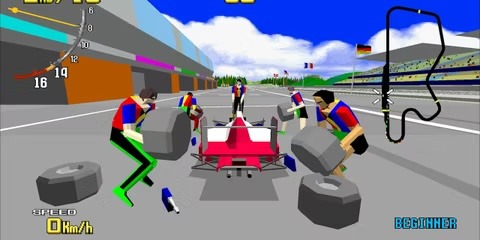
Developer: Sega AM-2 (original), M2 (Switch).
Platforms: Arcade, Genesis, 32X, Saturn, PS2, Switch.
Released: April 1992.
Sega was arguably the first company to make a pseudo-3D racing game with 1976’s Road Race. But when it came to actual polygonal 3D, they were beaten out by Namco’s underrated Winning Run and Atari’s stunt-filled Hard Drivin’. Yet they’re not as fondly remembered as Sega’s Virtua Racing.
It ran much faster than Hard Drivin’, looked more vibrant than Winning Run, and offered the player more bang for their buck. Players could pick multiple views over its forebears' first-person-only angle and featured 3D human NPCs during its pit sequences. VR may not have been the first 3D racer, but it was the best for its time and was certainly the most influential for the genre.
7
Scud Race
GameFAQs Score: 3.93/5 Stars

Developer: Sega AM-2.
Platforms: Arcade.
Released: 1996.
After the success of Sega’s Daytona USA, people at the company expected developers AM-2 to make Daytona USA 2 next. They would eventually make a sequel in 1998, but they wanted to mix things up for 1996. So, they made the similar but different Scud Race (aka Sega Super GT). It replaced Daytona’s stock cars with GT supercars and used the snazzy new Model 3 Step 1.5 hardware over Daytona's Model 2 tech.
While many of its elements still resembled Daytona, like the HUD and select screen, the gameplay was new. It introduced the ability to accelerate while drifting, giving players the edge over other racers if they could master it (and fishtails if they couldn't). It made for thrilling races, but it would ultimately be limited to the arcades as its Dreamcast port would get canceled.
6
Sega Rally Championship
Metacritic User Score: 8.2

Platform(s): Arcade , Sega Saturn , PC , Game Boy Advance , PS2
Released: October 11, 1994
Developer(s): Sega-AM3
Genre(s): Racing
Only a relatively small group of lucky arcade players really knew about Scud Race back in the day, but everyone practically heard about Sega Rally Championship. It may have only had 3 cars and 4 tracks, yet it gave players a new experience by replicating rally-style racing. For example, winning a race relied more on overtaking cars and staying within the time limit than constantly aiming for first place.
It certainly helps, but even if the player didn’t come in first on a track, their consistency could earn them enough points to win. The game was also more in-depth on how different surfaces affected the car’s handling. They could keep their grip on asphalt, then slip more on grass, then even more in mud. As simple as it sounds, it was enough to inspire other developers to make their own rally games and inspire players to get the game on the Saturn and PC.
5
F-Zero GX
Metascore: 89
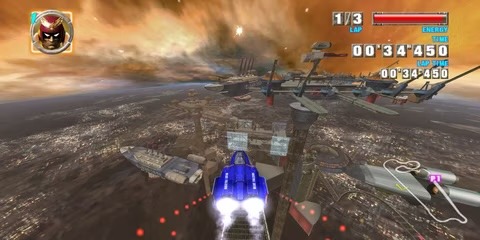
Platform(s): GameCube
Released: August 25, 2003
Developer(s): Amusement Vision
Genre(s): Racing
Sega making an entry in a Nintendo game is mind-blowing to look back on. It's just as surprising to learn it was specifically made by Amusement Vision, who’d later make the Yakuza/Like A Dragon series and become better known as RGG Studio. Y/LAD creator Toshihiro Nagoshi also produced many of Sega’s classic racers, like Daytona USA and Scud Race, alongside design work for Virtua Racing.
In short, odd as it seems, Nintendo knew they'd do great work with F-Zero GX. It lived up to the wild speed previous F-Zero games reached but with improved visuals, more tracks, and an infamous story mode that really ramped up the challenge. Canny players could even use Gameshark/Action Replay to access hidden tracks from its arcade equivalent, F-Zero AX, and get even more hours of ultra-speed racing.
4
Daytona USA 2: Battle on the Edge
GameFAQs Score: 4.27/5 Stars
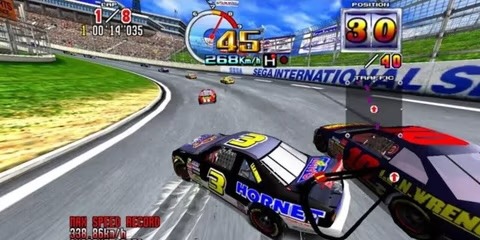
Developer: Sega AM-2.
Platforms: Arcade (original), PS4, PS5, Xbox Series X/S, PC ( Like A Dragon: Gaiden ).
Released: June 1998.
As groundbreaking as Virtua Racing was, Daytona USA was a vast improvement in graphics and gameplay. It had more cars, more impressive tracks, and adaptive AI that tailored itself towards the player’s skill level. So, it’s no wonder Sega would port and remake it multiple times, with the Saturn alone having 2 versions of the game. However, its sequel, Daytona USA 2: Battle on the Edge, would never leave the arcades.
The only way to play it at home is to get Like a Dragon Gaiden and find it under the new, non-license-infringing title, Sega Racing Classic 2,at the arcades. It has new drifting techniques like the ‘slingshot’, and extra modes like Grand Prix and Endurance. With much more on offer, it’s surprising that Sega never gave it a chance outside the arcades.
3
Sonic & All-Stars Racing Transformed
Metascore: 82

Platform(s): PS3 , PS Vita , Xbox 360 , Wii U , 3DS , PC , Android , iOS
Released: November 20, 2012
Developer(s): Sumo Digital
Genre(s): Racing
Technically, Sonic & All-Stars Racing Transformed wasn’t made directly by Sega. Both it and its predecessor, Sonic & Sega All-Stars Racing, were made by Sumo Digital, who previously made OutRun 2006: Coast 2 Coast for the company, and recently made The Texas Chainsaw Massacre game. Sega just published the game for its various platforms.
Still, it’s chock-full of references to classic Sega games, right down to its soundtrack, which is full of remixes of old-school tunes. The Transform mechanic also spiced things up beyond its ‘Sega Kart’ roots. At certain points on the track, the player's car will transform into a boat or aircraft to travel on water or in the air, complete with new physics and mechanics to work with. It’s an inventive game that could do with a modern re-release.
2
F355 Challenge
Metascore: 85

Developer: Sega AM-2.
Platforms: Arcade, Dreamcast, PS2.
Released: July 1999.
Sega has had a thing for Ferraris since OutRun used a Ferrari Testarossa Spider. It certainly was the start of their willingness to use actual motor licenses, from the different cars in games to the Daytona 500 NASCAR race itself. It culminated in F355 Challenge, a game that showcased producer/director Yu Suzuki’s love for the brand so much he (allegedly) raced his own Ferrari on tracks for data collection.
It also shows how closely he and AM2 replicated the F355. For 1999, it was the most realistic depiction of the car and what it’s like to race it on circuits. Combined with its use of real racing tracks, and the same real-time ‘Magic Weather’ system as Shenmue, it gave players an authentic racing experience come rain or shine, both in the arcades and at home.
1
OutRun 2
Metascore: 79

Developer: Sega AM-2 (Arcade), Sumo Digital (Xbox).
Platforms: Arcade, Xbox.
Released: December 2003.
The original OutRun inspired a host of follow-ups. Some of which are just as fondly remembered, like OutRunners. Yet there was only one game that got the distinction of being OutRun’s official sequel, and it came out 17 years later, in 2003. OutRun 2 is arguably the best entry in the series too, with some preferring its souped-up re-release OutRun 2006: Coast 2 Coast.
O2006 had more cars and more modes, including its exclusive ‘Coast 2 Coast’ Mode. But O2 had Heart Attack mode, where performing select stunts during courses earns the player heart points. O2’s journey home via the Xbox also had better controls than O2006's home releases. It also came with tracks from Scud Race and Daytona USA 2. Players who missed out on those underrated gems could finally give them a swing via O2.
#sega#sonic and all stars racing transformed#sega gt 2002#super hang on#virtua racing#scud race#sega rally championship#f zero gx#daytona usa 2 battle on the edge#f355 challenge#outrun 2
3 notes
·
View notes
Text
Todays rip: 24/11/2023
Beautiful! ~ Curveball of Sean Kingston
Season 4 Episode 1 No Album Release (Read More) Game Over - Namachuukei 68
Ripped by pedipanol / Saria Lemes
youtube
For as omnipotent as my SiIvaGunner knowledge can appear from reading this blog, I do have several blind spots. A big one of these surrounds the Touhou series - a franchise so big I cannot even begin to go into specifics, yet one that has its origins on Japanese home computer systems. These systems are very much forgotten by the general retro gaming sphere, thanks to how region-exclusive they were, yet several big companies of today such as Capcom, Koei and Konami all played part in their regional successes. And though Touhou had its start in the late 90s PC-98, as opposed to the early 90s Sharp X68000 of today's discussion, the overall sound of these rips and the rippers that favored them has always felt similar.
Beautiful! ~ Curveball of Sean Kingston sort of serves as a way for me to appreciate this distinct, immensely charming sound of these systems, without any sort of experience or existing fondness for them, Touhou, or any other franchise closely tied to them. The source material feels almost ludicrously obscure - a Game Over theme to an old annual Baseball game by Konami - yet it hardly matters given the intents of the rip. Arranging one of my all-time favorite SiIva memes, Sean Kingston, into such a uniquely beautiful instrumentation, was enough to make a rip that completely enamored me on first listen. And yeah, it is but one in a sea of similarly high-quality rips from rippers like Princess Sylvyspirit, Lenox and pedipanol herself - yet this was one of the first I've been able to truly connect with. With this rip and more, I now know just how much I have left to learn about old PC-system music, and just how incredible it can sound.
And yeah, I know its a little dismissive to boil down all 90s-PC game music from Japan into just Touhou, but it WAS how I was effectively introduced to the scene's prominence and popularity - in large part thanks to SiIvaGunner and its prominent fans! I feel that this rip is only scratching the surface of what these rippers have to offer, and that alone excites me! How many other golden rips like Beautiful! ~ Curveball of Sean Kingston are there out on the channel - especially ones without album releases?!
And on that note - holy shit, the discovery I had upon checking who made this rip! I've been a fan of Saria Lemes' work for a good while based on her work on indie games and Twitter, yet never drew the connection between that name and her online alias appearing as a credited SiIvaGunner ripper. It's mind boggling to realize sometimes that, yes - SiIvaGunner has become a legitimate platform for people looking for a career in music to practise and experiment before going professional. Be it Dante and MtH now working on indie game projects, or Ahmaykmewsik being the lead behind a project all his own - its immensely inspiring to see, especially given how long I've been collectively following all of these people through the channel.
Nevertheless, no matter how much success befalls any of my favorite rippers - I hope they all remain aware of just how much their work on SiIva continues to inspire me and thousands more the world over.
#todays siivagunner#season 4 episode 1#siivagunner#siiva#tentative rip name#pedipanol#saria lemes#Youtube#chiptune#pc98#touhou pc98#sharp x68000#x68000#japanese pc#retro pc#touhou#touhou project#touhou music#sean kingston
4 notes
·
View notes
Text









416.) Powermonger
Release: October, 1990 | GGF: Real-Time Strategy, Real-Time Tactics | Developer(s): Bullfrog Productions, Ltd. | Publisher(s): Electronic Arts, Inc., Imagineer Co., Ltd., Ocean Software Ltd. | Platform(s): Amiga (1990), Atari ST (1990), PC-98 (1991), Sharp X68000 (1991), DOS (1992), FM Towns (1992), Genesis (1992), SNES (1993), Macintosh (1994), SEGA CD (1994)
2 notes
·
View notes
Text
Professional Mahjongg Gokuu (1986) プロフェッショナル麻雀悟空


Date: December 25, 1986
Platform: MSX / Famicom Disk System / Sharp X68000 / FM Towns / NEC PC-8801 / NEC PC-9801 / FM-7
Developer: Chat Noir
Publisher: ASCII Corporation
Genre: Trivia / Board Game Franchises: Mahjong Gokū
Type: Reimagining
Summary:
Play riichi mahjong against characters from the classical Chinese novel Journey to the West in this game for the Famicom Disk System and Japanese computers.
Source: https://www.giantbomb.com/professional-mahjongg-gokuu/3030-33870/
Link: https://www.youtube.com/watch?v=gfnZtJEhXEU&ab_channel=TheVideoGamesMuseum
#Professional Mahjongg Gokuu#プロフェッショナル麻雀悟空#jttw media#jttw#xiyouji media#video game#game#Chat Noir#ASCII Corporation#reimagining#reimaging
3 notes
·
View notes
Text
Um… you do know that you can turn off the hardware DRM stuff, right? There is an option in System Preferences to disable it. There aren’t any “Apple-only chips” — devs with access to the installer (which Microsoft won’t sell you) have reported that you can install the ARM version of Windows (the version which is on the original Surface, for example) on Apple Silicon Macs, and that it actually runs better than on Microsoft’s own hardware; the reason you-the-consumer can’t do it is because Microsoft is refusing to let anybody buy copies of Windows for ARM; you have to be partnered with them and bound with all kinds of legal restrictions before they’ll let you have access. You can certainly put Linux on ARM Macs if you want, although the drivers aren’t all the way there yet. (Then again, if you want a full set of drivers which work on modern hardware you aren’t using Linux anyway.)
It might be worth quoting the Asahi Linux (a project to make a distro specifically for Apple Silicon Macs) intro:
Will this make Apple Silicon Macs a fully open platform?
No, Apple still controls the boot process and, for example, the firmware that runs on the Secure Enclave Processor. However, no modern device is “fully open” - no usable computer exists today with completely open software and hardware (as much as some companies want to market themselves as such). What ends up changing is where you draw the line between closed parts and open parts. The line on Apple Silicon Macs is when the alternate kernel image is booted, while SEP firmware remains closed - which is quite similar to the line on standard PCs, where the UEFI firmware boots the OS loader, while the ME/PSP firmware remains closed. In fact, mainstream x86 platforms are arguably more intrusive because the proprietary UEFI firmware is allowed to steal the main CPU from the OS at any time via SMM interrupts, which is not the case on Apple Silicon Macs. This has real performance/stability implications; it’s not just a philosophical issue.
(And it’s worth mentioning: regardless of what you may think of Apple, the X86 instruction set’s days are numbered. All modern X86 CPUs — whether they’re from Intel or knockoffs — end up with either massive power usage and heat generation (and also more and more difficulty of manufacture, and increasing amounts of mandatory error-checking because in order to keep up performance the architecture has to be made so small that it is subject to Quantum Weirdness and things like electron tunneling are causing faulty output unless there’s a whole extra layer of microcircuitry to verify results), or else terrible performance. There are no cool-running, fast, modern X86 chips, and sooner or later Moore’s Law will fail outright and there will be a mass industry exodus from their chips. (Which isn’t necessarily the end of the line for manufacturing or sales — the Motorola 68000 series CPUs from the original Mac, the Amiga, and the Sharp X68000 computers are still being made and used today, long after they stopped being used in any manufacturer’s desktop computers. They’re just in different markets, primarily embedded systems, using a streamlined version of the CPU which wasn’t possible to make back when it was new.) Apple isn’t the only one trying to get away from Intel before the emperor is publicly revealed to have no clothes — Microsoft has seen the writing on the wall and is sending ARM workstations to developers (they look like squatter versions of the Mac Mini), while those prebuilt Linux systems from Raspberry Pi use ARM CPUs as well. But apparently nearly all ARM systems use soldered RAM — when last I checked there were only a handful which didn’t, even in the Linux “build your own” world — so unless there’s a major sea change you’re going to have to get used to that.)
If you like to spend as much time doing maintenance and hardware tweaking as you spend actually using the computer, then go ahead, build your Frankenstein’s monster computer which you can continue to upgrade 20 years from now and run the latest version of Linux (which at that time, I’m betting, will still not have a DE that doesn’t require the user to drop into the command line to do really basic things like change the monitor resolution). But you are in a minority of users which is actually smaller than Mac users. The overwhelming majority of computer users — both PC and Mac — actively don’t want to fiddle with hardware, and tend to replace their machines long before they technically become obsolete, and in fact in practice PCs have always had (and continue to have) shorter average lifespans than Macs. (The numbers are a lot closer than they used to be — back around 2000 it was something like 2.5 years for the average PC, 4 years for the average Mac, the last time I saw figures, about a year ago, it was 4.5 years for the average PC, 5 years for the average Mac.) “You’ll still be able to upgrade this in 7 years” is mostly a selling point for the delusionally optimistic — the overwhelming majority of users, regardless of OS, will have replaced the machine outright long before they reach 7 years. Complaining that Apple doesn’t make a machine to cater to your niche — which has significant overlap with “I’m a cheapskate and proud of it” and therefore requires an entirely different approach anyway — is like complaining that Boeing doesn’t sell autogyros.
So: again, an anti-Apple ranter who uses lies and half-truths to justify their biases. Color me surprised.
One thing that I keep seeing whenever I make posts that are critical of macs is folks in the notes going "they make great computers for the money if you just buy used/refurbs - everyone knows not to buy new" and A) no they don't know that, most people go looking for a new computer unless they have already exhausted the new options in their budget and B) no they don't make great computers for the money, and being used doesn't do anything to make them easier to work on or repair or upgrade.
Here's a breakdown of the anti-consumer, anti-repair features recently introduced in macbooks. If you don't want to watch the video, here's how it's summed up:
In the end the Macbook Pro is a laptop with a soldered-on SSD and RAM, a battery secured with glue, not screws, a keyboard held in with rivets, a display and lid angle sensor no third party can replace without apple. But it has modular ports so I guess that’s something. But I don’t think it’s worthy of IFixIt’s four out of ten reparability score because if it breaks you have to face apple’s repair cost; with no repair competition they can charge whatever they like. You either front the cost, or toss the laptop, leaving me wondering “who really owns this computer?”
Apple doesn't make great computers for the money because they are doing everything possible to make sure that you don't actually own your computer, you just lease the hardware from apple and they determine how long it is allowed to function.
The lid angle sensor discussed in this video replaces a much simpler sensor that has been used in laptops for twenty years AND calibrating the sensor after a repair requires access to proprietary apple software that isn't accessible to either users or third party repair shops. There's no reason for this software not to be included as a diagnostic tool on your computer except that Apple doesn't want users working on apple computers. If your screen breaks, or if the fragile cable that is part of the sensor wears down, your only option to fix this computer is to pay apple.
How long does apple plan to support this hardware? What if you pay $3k for a computer today and it breaks in 7 years - will they still calibrate the replacement screen for you or will they tell you it's time for new hardware EVEN THOUGH YOU COULD HAVE ATTAINED FUNCTIONAL HARDWARE THAT WILL WORK IF APPLE'S SOFTWARE TELLS IT TO?
Look at this article talking about "how long" apple supports various types of hardware. It coos over the fact that a 2013 MacBook Air could be getting updates to this day. That's the longest example in this article, and that's *hardware* support, not the life cycle of the operating system. That is dogshit. That is straight-up dogshit.
Apple computers are DRM locked in a way that windows machines only wish they could pull off, and the apple-only chips are a part of that. They want an entirely walled garden so they can entirely control your interactions with the computer that they own and you're just renting.
Even if they made the best hardware in the world that would last a thousand years and gave you flowers on your birthday it wouldn't matter because modern apple computers don't ever actually belong to apple customers, at the end of the day they belong to apple, and that's on purpose.
This is hardware as a service. This is John Deere. This is subscription access to the things you buy, and if it isn't exactly that right at this moment, that is where things have been heading ever since they realized it was possible to exert a control that granular over their users.
With all sympathy to people who are forced to use them, Fuck Apple I Hope That They Fall Into The Ocean And Are Hidden Away From The Honest Light Of The Sun For Their Crimes.
2K notes
·
View notes
Text
Game review: Dai Makai Mura / Ghouls N Ghosts (Sharp X68000 version)


Title: Dai Makai-Mura
Japanese Title: 大魔界村
Release Date: 22 April 1994
Platform: Sharp X68000
Developer: Capcom
Publisher: Capcom
Genre: Platform Action
Number of Players: 1
Music Composer(s): Tamayo Kawamoto
——————————————————————————
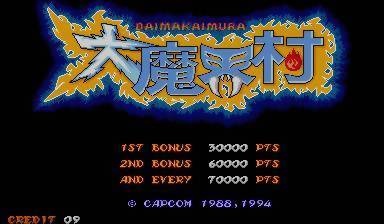
Gameplay conducted using WinX68K High Speed Emulation.
"The game that brought spookiness to the platformer genre."
Daimakaimura. The game that brought spookiness to the platformer genre.
Sharp X68000. In the 90s, while most people in the West played on the Amiga, Atari ST and IBM PCs, all of which tended to get substandard arcade conversions, the Japanese were better off as they had their eyes on three computers. The Fujitsu FM Towns series, the NEC PC-98 series, and the most notorious of all - the Sharp X68000 lineup.
The FM Towns being the king of bringing CD media to PC gaming.
The NEC PC-98 series being responsible for bringing Touhou, Policenauts, various Japanese ports of Western games, and being the granddaddy of the hentai revolution where so many games on the PC-98 would be filled to the brim with porn.
The Sharp X68000 is, as the cool kids say these days, the official GANGSTA of PC gaming due to its reputation for arcade perfect ports, which is why there are so many games with arcade-perfect X68000 conversions. This, Strider, Final Fight, and many more.
Daimakaimura on Sharp X68000 is one of them.
——————————————————————————
Daimakaimura or Ghouls 'N' Ghosts as it was known in the west is the sequel to the very popular Makaimura or Ghost 'N' Goblins, in case you didn't know. The game has you set out as Arthur, our knight in shining amour. Battling demons in the hope of getting his kidnapped (again) woman back from the devil, or at least something that resembles him. Arthur must battle his way throughout eight tough platform stages, taking on all manner of zombies, ghosts and ghouls. But wait!
You reach the end and guess what? Yep, the bastards send you right back to the beginning to find the magic ring, which you need to defeat the last boss. Why this couldn't be told to you at the beginning of the game, I don't know. So off you set, AGAIN! As if once wasn't hard enough.
Thankfully, there are many weapons for Arthur to pick up that will help him on his quest. As well as the weapons, there's also the magic amour that can perform different magic depending upon which weapon you are holding.
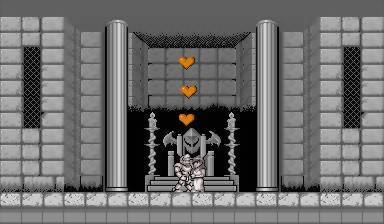

Gameplay-wise, it's nothing more than you would expect from a Sharp X68000. Absolutely arcade-perfect.
The music? Well, being a Sharp X68000, players can configure what sort of sound would play from it. You could play it via the internal sound chip, or via the Roland SC-55 and/or MT-32 MIDI modules that upgrade the sound by a margin I can't tell, because I don't own a X68000. X68000 systems are really unreliably expensive, and the 5.25-inch floppy disks these games come on are rather fragile or have a really short shelf life.
This Sharp X68000 version is the absolute BEST version money could buy if you lived in Japan in 1994 and had a load of cash to spend. But for everywhere else, the Mega Drive version (programmed and published by Sega) is still the king.

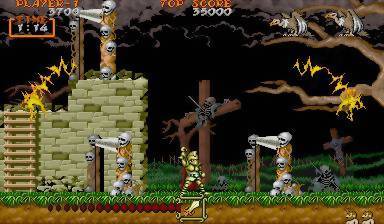
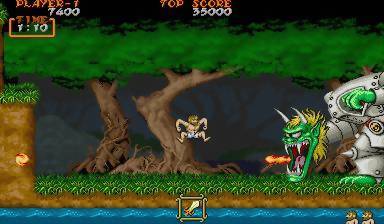
PROS:
Being a Sharp X68000 conversion (don't forget the X68000 is a series of computers), it plays just like the Capcom arcade machine
The music, whether it be played back via the internal sound chip or the Roland MIDI modules, sound absolutely GREAT
The graphics are exactly the same as that on the Capcom arcade machine
High level of playability
Challenging enough to make gameplay last throughout the month...
CONS:
...but enemies can be a bit brutal
You get the sense the Capcom intentionally wanted to make people break tens of controllers during game production...
...and you have to play the game TWICE to get the game's true ending, which did piss people off; but Capcom could get away with it because the game is a stone-cold tough-as-balls arcade classic
Verdict:
An excellent game which is as flawless as the arcade machine.
Here is my scoring system for this game.... actually, there is no point in grading this game on gameplay, graphics, and all the other criteria because this is a rare specimen I get to play. Sharp X68000 version of Ghouls N Ghosts would have gotten a 10/10 for me, but if a new player were to play this expecting a Mario-style platformer a-la Super Mario Bros. on the NES, they're really going to be disappointed. Saying that though, it plays absolutely well, just as solid as the arcade machine, and that's all that matters when it comes to reviewing Sharp X68000 games.
So overall, Daimakaimura on the Sharp X68000 gets a score of...
9/10.
2 notes
·
View notes
Text
PC Engine Fan #44 (July 1992): Interview with Hideo Kojima on Snatcher: CD-ROMantic
"I don't want games to just be time wasters" A direct interview with the developer of Snatcher!

Hideo Kojima (game designer and writer) - The developer of the computer versions [of Snatcher] is now working on the PC Engine version himself.
The person in charge of this new PC Engine version of Snatcher is none other than Mr. Kojima, who also worked on the original version for personal computers. We interviewed him in order to learn about his thoughts regarding the title.
Why was Snatcher chosen to be Konami's first CD-ROM title?
The previous versions of Snatcher for personal computers ended with an unfinished story, so we received various comments, moreso from users than from within the company, that the story needed to end somewhere. There were talks about developing it for the Sharp X68000 or the Fujitsu FM Towns, but we ultimately decided on the PC Engine's Super CD-ROM² add-on. My projects usually end up having too much content, which gets people angry at me, but this time I could add to my heart's content without worrying about storage capacity, which has been unprecedented in terms of development environment.
Are the developers the same people who worked on the previous version?
The team who worked with me on the original PC versions were pretty capable (laughs), but we ended up being split and scattered around to different departments. That's why there hasn't been a sequel until now, but I was fortunate enough to had worked together with those key members on the same team.
Are there any anecdotes regarding the development of Snatcher?
The original Snatcher for the NEC PC-8801 was our first adventure game. We were completely fumbling our way during development, resulting in many issues, and quite frankly, it was very troublesome. On the other hand, it was also a profoundly memorable work. There were fights during the nights, staff members felt ill, and we all cried when we saw the ending. Snatcher was truly our youth. My mentality is that videogames should not just be something to waste time on. I want to make a game that you would want to play not just to entertain yourself when you have the time, but that it'll make you want to sacrifice other things in your life to spend time with it. Snatcher was made under such a concept. Even four years after its release, I still receive fan letters and Valentine's Day chocolates. I even get annual letters from fans updating me on their current affairs. More so than a mere product, it was like a mediator that allowed me to meet new people.
Finally, what can kind of people do you hope will get to play the PC Engine version of Snatcher?
I want for those who had already played the original PC versions of Snatcher to play it again, including the sequel portion. And to those who don't know anything about the game, I hope that they'll absolutely play it too.
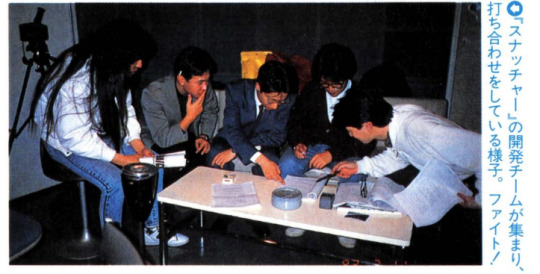
The Snatcher development team gathering for a meeting. Go!
"What's next for the PC Engine? And Konami?" We press Konami, who seek to challenge various genres.

Akihiko Nagata (vice chief of Konami's Technology Research Institute) - He talks about how he personally wants to do great things for the arcade.

Hiroyuki Uchida (vice chief of Konami's domestic sales department 1) - He talks calmly about the future of the PC Engine from a sales perspective.
There are going to be high expectations from users if Konami is going to develop CD-ROM games. Mr. Nagata from the development side and Mr. Uchida the sales side talked to us about their general plans for future PC Engine projects.
How many ports requests have you gotten from PC Engine users?
Uchida: There are many ports for arcade games. Regardless of whether we can do them or not (laughs), most of them are for shooting games.
Lately the PC Engine library is focused on the CD-ROM format. What will become of the HuCard format?
Nagata: It's likely there's going to be fewer of them.
What about Konami's own software?
Uchida: It depends on the platform, but we'll likely make something in a form that suits the product.
Nagata: If we put out a game on a HuCard, then we'll likely have complaints from our users. They'll be asking why we didn't put the game out on CD-ROM. (laughs)
Uchida: That's why we'll be focusing on the CD-ROM format.
Will there be completely original titles for the CD-ROM format?
Uchida: As a sales person, I don't really like ports. If we could make something original, then we would like to harvest whole new titles on the PC Engine's CD-ROM format.
We heard rumors that you're porting Gradius II to the Mega Drive. Is that true?
Nagata: Not at all. (laughs)
What about putting it out on the PC Engine?
Nagata: If the demand is there, we'll consider it.
Uchida: It's a pretty popular title after all. As for the Mega Drive, we have no plans at the moment.
Nagata: Personally I want to make something great for the arcade.
As in an arcade game?
Nagata: We're in a period in which the whole industry is saving its strength to make something really good.
Uchida: Capcom are the only ones doing their best in this field, but we hope that we'll also have something to show at the AM show this August.
Any last words before we wrap-up?
Nagata: Making games is difficult, but as long as there's users supporting us we'll continue making our products.
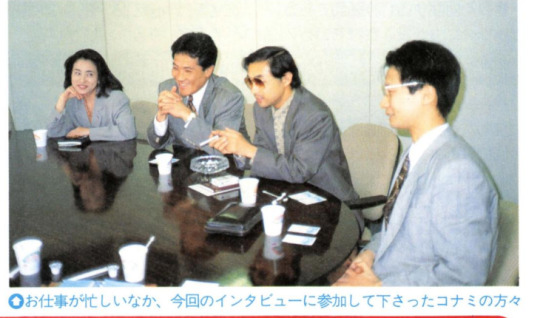
Konami personnel who participated in this interview (with Konami's public relationist Ms. Taeko Hayasaka).
Source for the interview: PC Engine FAN #44 (July 1992), published by Tokumashoten Intermedia.
9 notes
·
View notes
Text
Friday Special #1
October 23rd, 2020
Hello and welcome to the first issue of the Friday Special!
In honor of the Spooky Month October, today’s topic of choice is
Castlevania (Franchise)

(For the sake of keeping it concise, I will only be writing about the main games for console as the franchise is quite massive. The handheld and spinoff games will have their own post)
Okay so where to begin?
Castlevania has seen five different developers in its timeline of games:
Konami (main developer and publisher)
Eighting
MercurySteam
Kojima Productions
M2
Castlevania as a series began its life in the year 1986, the same year the gaming world saw the introduction of other franchises as Dragon Quest (Dragon Warrior in the West until 2005 for North America and 2006 for Europe), Metroid and The Legend of Zelda. The first game was critically and commercially very successful upon release and has since been considered one of the biggest gems for the NES (Nintendo Entertainment System) and RF Famicom Disk systems.
With success came sequels, and Castlevania II: Simon’s Quest (1987) and Castlevania III: Dracula’s Curse (1989) both for the NES and RF Famicom Disk systems, with notable mention to Simon’s Quest containing the signature tune of “Bloody Tears” which became as iconic as the series itself and ended up becoming the main theme of the series.
Although Simon’s Quest did away with the traditional linear platformer setup to instead go for more non-linear gameplay inspired by The Maze of Galious (another Konami title that was released the year before), the third installment would go back to the platforming roots of the first game but kept the nonlinear gameplay.
The series saw its leap into the 16-bit era with the release of Super Castlevania IV on the Super Famicom and SNES (Super Nintendo Entertainment System) systems in 1991 in Japan and North America (1992 in Europe). Like the sequels before it, it garnered massive praise and was even seen as one of the best games of all time by several publications both at the time and in retrospect with high scores across the board by the likes of Nintendo Power, Gamespot and IGN, just to name a few.
Although it would be five years before the well-known Castlevania: Symphony of the Night, would be released, several games did come out in between them such as Castlevania: Rondo of Blood (first released as PC-Engine Super CD-ROM in Japan in 1993 before being ported to the PSP in 2007 as Castlevania: The Dracula X Chronicles), the Sharp X68000 home computer version of Castlevania (later re-released for the Playstation in 2001), Castlevania: Bloodlines (the only Castlevania game ever released on the Sega Genesis in 1994) and Castlevania: Dracula X in 1995.
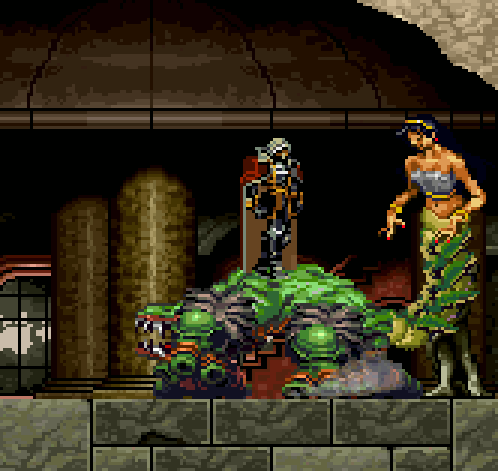
When Castlevania: Symphony of the Night was finally released in 1997, it was initially greeted with mixed reviews and combined with lackluster advertising for the game in North America, it would take a while before the game would eventually gain a cult following thanks to word-of-mouth before later being hailed as one of the very best in the series. It was the direct sequel to Rondo of Blood and featured the non-linear level design taken from Simon’s Quest years before.
As with most games from yesteryear, Castlevania did not have a smooth transition into the 3D realm of the Ninendo 64 when Castlevania 64 was released in 1999. Receiving mixed reviews upon release, the controls and in-game camera were criticized harshly but the graphics, gameplay (went through heavy changes) and story were seemingly positive. Its successor, Legacy of Darkness, was released that same year to worse reviews than the first.
The next 3D installment was Castlevania: Lament of Innocence in 2003, released on the PS2. The game took a heavy departure from its roots by instead utilizing the hack-and-slash genre best known in games like Devil May Cry and God of War to name a few. Despite the changes, it was positively received by critics and fans alike for its enjoyable gameplay and the reception of moving from 2D side-scrolling to 3D was favorable.
In more recent years since the release of Castlevania: Lords of Shadows in 2010, Castlevania has now started its series under the Lords of Shadows names with the latest release being in 2014 with the title Castlevania: Lords of Shadow 2. At this time, the latest game to date is the Castlevania Anniversary Collection.

Thoughts from the Head
I’ve been well-acquainted for about as long as I can remember, having seen an ad for the first Castlevania game for the GBA in a page of an old Marvel Barbie comic I have (I think I still have those comics but they’re at home at the moment so I can’t access them). I’ve actually express in playing them but copies are a little hard to come by since I do not have the Famicom Disk System (I only have the normal RF Famicom) but I might be able to at least try Super Castlevania IV on the Super Famicom (the prices for the cartridges are higher than average but it’s a well-known franchise so that’s usually the case). In regards to the music, the soundtracks absolutely slap, so especially give them a listen, especially Simon’s Quest.
5 notes
·
View notes
Text
PC Engine - Pac-Land
Title: Pac-Land / パックランド
Developer/Publisher: Namco
Release date: 1 June 1989
Catalogue No.: NC64002
Genre: Action
Format: HuCard


An utterly superb conversion: this IS the coin-op, right down to the very last detail. If you're a fan of the coin-op, don't miss it. Graphics, sound, gameplay, it's all from the arcade to here. Pac-Land was also ported to the Famicom and many computers including the Amiga, Commodore 64, and Sharp X68000. Run along the levels, jumping to avoid ghosts and other enemies, collect fruit as you go, and navigate over various platform-based obstacles and springboard jumps over lakes. Has a choice of 2 control methods for those who prefer the push-button-to-run of the arcade original.



youtube
4 notes
·
View notes
Video
youtube
Classic Game of the Week: Alien Syndrome Developer: Sega / Sanritsu (NES) Publisher: Sega Platforms: Arcade, Amiga, Atari ST, Commodore 64, Game Gear, MS-DOS, MSX, NES, Master System, ZX Spectrum, Sharp X68000 Video Courtesy of: World of Longplays
3 notes
·
View notes
Photo


Castlevania Anniversary Collection – Early Summer 2019
Classics that defined the Castlevania series.
The first Konami Castlevania Collection is designed to be a completed collection around the origins of the historic franchise.
Included is a unique eBook that has details provided by developers, artists and other inspired by the Castlevania legacy.
Released as part of the Konami 50th Anniversary celebration, now the best time to relive these timeless classics that helped define the platformer genre.
Great news! Definitely holding off until we get to see the full list though. Missing Castlevania II: Simon’s Quest and having the Gameboy game, Castlevania II: Belmont’s Revenge in its place is pretty bizarre. It’s probably one of the missing 4, but why not announce it now?
My hopes for the remaining 4? Vampire Killer (MSX), Castlevania 2 (NES), Castlevania Bloodlines (Megadrive) and Castlevania Chronicles (Sharp X68000/Playstation).
88 notes
·
View notes
Video
youtube
Castlevania (NES) - Flashback Friday
It's all wall chicken that's actually porkchops and accusations in this special Castlevania Flashback Friday!
If you want to see more, please subscribe!: http://bit.ly/sub2GPB Follow us on Twitter: https://twitter.com/gameprobros ABOUT THE GAME Castlevania is an action-platformer video game developed and published by Konami for the Family Computer Disk System video game console in Japan in September 1986.[7] It was ported to cartridge format and released in North America for the Nintendo Entertainment System (NES) in May 1987 and in Europe in 1988. It was also re-issued for the Family Computer in cartridge format in 1993. Players control Simon Belmont, who has entered Castlevania to defeat the vampire Count Dracula. It is the first game in Konami's Castlevania video game series. It was followed a month later by the MSX2 game Vampire Killer and also succeeded by Castlevania II: Simon's Quest and Castlevania III: Dracula's Curse on the NES. Super Castlevania IV, which follows the same setting, was released in 1991 for the Super Nintendo. A remake for the Sharp X68000 home computer was eventually re-released for the PlayStation as Castlevania Chronicles in 2001. All reasonable effort has been made to credit all items used within this video, and to ensure all items have been utilized within fair use and public domain. If you believe we have forgotten to credit you, please PM us via youtube profile and we will make our best effort to rectify the issue. Episode: Castlevania (NES) - Flashback Friday #Castlevania #NES #Retro
#gaming#gameplay#retro#retrogaming#nintendo#filashbackfriday#castlevania#gamer#gamers#lol#funn#funny#letsplay#gamegrumps#tumblr#video#video games#nes
1 note
·
View note
Text










544.) Fatal Fury Special
Release: September 16th, 1993 | GGF: Action, Arcade, Fighting | Developer(s): SNK Corporation | Publisher(s): SNK Corporation, SEGA Enterprises Ltd., Victor Entertainment Inc., Takara Co., Ltd., Magical Company Ltd., Hudson Soft Company, Ltd., JVC Musical Industries, Inc., Japan Home Video Co., Ltd., SNK Playmore Corporation, D4 Enterprise, Inc., HAMSTER Comporation | Platform(s): Arcade (1993), Neo Geo (1993), Game Gear (1994), Neo Geo CD (1994), SEGA CD (1994), Sharp X68000 (1994), SNES (1994), TurboGrafx CD (1994), FM Towns (1996), Xbox 360 (2007), Wii (2009), Android (2015), iPad (2015), iPhone (2015), Browser (2016), Linux (2016), Macintosh (2016), Windows (2016), Nintendo Switch (2017), PlayStation 4 (2017), Xbox One (2017), Windows Apps (2018), Antstream (2019)
0 notes